[COLOR="PaleTurquoise"]
2014.01.07
[/COLOR]

So Proudly We Hail (1943) DVD5 - Claudette Colbert, Paulette Goddard Classic Wartime Drama [DDR]
So Proudly We Hail! is a 1943 American film directed and produced by Mark Sandrich, and starring Claudette Colbert, Paulette Goddard – who was nominated for an Academy Award for Best Supporting Actress for her performance – and Veronica Lake. Also featuring George Reeves, it was produced and released by Paramount Pictures.
The film follows a group of military nurses sent to the Philippines during the early days of World War II. The movie was based on a book written by nurse Juanita Hipps a World War II nurse – one of the "Angels of Bataan" – who served in Bataan and Corregidor during the time when McArthur withdrew to Australia which ultimately led to the surrender of US and Philippine troops to Japan. Those prisoners of war were subjected to the infamous Bataan Death March. The film was based, in part, on Lieutenant Colonel Hipps' memoir I Served On Bataan.
CAST:-
Claudette Colbert as Lt. Janet "Davy" Davidson
Paulette Goddard as Lt. Joan O'Doul
Veronica Lake as Lt. Olivia D'Arcy
George Reeves as Lt. John Summers
Cora Witherspoon as Mrs Burns-Norvell
Barbara Britton as Lt. Rosemary Larson
Walter Abel as Chaplain
Sonny Tufts as Kansas
Mary Servoss as Capt. "Ma" McGregor
Ted Hecht as Dr. Jose Bardia
John Litel as Dr. Harrison
Dr. Hugh Ho Chang as Ling Chee
Mary Treen as Lt. Sadie Schwartz
Kitty Kelly as Lt. Ethel Armstrong
Helen Lynd as Lt. Elsie Bollenbacher
Lorna Gray as Lt. Tony Dacolli
Produced and Directed by Mark Sandrich
Written by Allan Scott
Music by Edward Heyman, Miklós Rózsa
MOVIE REVIEW:- So Proudly We Hail (1943)
Claudette Colbert, Paulette Goddard and Veronica Lake. These three very different Paramount Pictures actresses were brought together to star in one of my favorite 1940s films, So Proudly We Hail (1943). The film follows a pair of U.S. Army nurses–Lt. Janet Davidson (Colbert) and Lt. Joan O’Doul (Goddard)–who leave for Hawaii to begin their tour of duty.
Shortly after they leave, Pearl Harbor is attacked and the United States is brought into World War II. The military ship picks up nurses and wounded from Pearl Harbor, among them troubled nurse Lt. Olivia D’Arcy (Lake). The trio is then sent to the Philippines, first assisting soldiers in Bataan and then evacuating to Corregidor.
From a dramatization of Doolittle’s Raid in Thirty Seconds Over Tokyo to Mrs. Miniver showing life on the British homefront and the Battle of Dunkirk, WWII-era Hollywood made several films that depicted what was going on overseas at the time. While I enjoy most ’40s WWII films, I love So Proudly We Hail because of its focus on military nurses.
Colbert is the real star of the film; the rock of the group of nurses, leading them to aid injured soldiers. Goddard and Lake flank her as secondary female leads: Goddard the flirty, glamor girl and Lake the troubled, quiet nurse. Their differences in real life as actresses, as well as the differences in their characters, illustrate the wide range of people who were brought in to serve together during wartime.
“The events in this movie were still very much on the minds of Americans when this film came out,” said Turner Classic Movies prime time host Robert Osborne in the DVD introduction. “Events in the movie had happened for real recently and news reports were still coming out.” Movies like this are made to make viewers feel proud and patriotic of their country, but what I like about So Proudly We Hail is that I feel it’s fairly realistic. Nurses with 104-degree temperatures from malaria are still caring for men while others are craving tomatoes and milk, items that can’t be found on the military front.
“What is a heroine,” One nurse asks, tired of all the attention on their voyage home. “I don’t know. Anyone who is still alive,” another says.
While Colbert is consistently good in all of her films, So Proudly We Hail gave Lake and Goddard the chance to show off their acting chops.
One scene that sticks out is when Goddard and Colbert find out why Lake acts cold towards the other nurses. She opens up to Colbert about why she is angry and is there to “kill Japs”: “Today is Christmas, isn’t it? The time for cheer and good fellowship and for peace. Well, today’s my wedding day. He and I were to be married today in St. Louis. And why weren’t we? Because he’s dead. He died that first morning. They killed him. I saw him. He was running across the field to his plane and they killed him. Sixty bullets – sixty! By the time I got to him he was dead. His face was gone – I couldn’t see him anymore. Just blood – blood all over.”
For Goddard, the scene that stays with you is when she tearfully says goodbye to soldiers in a military hospital before being shipped back to the United States. When the film starts, Goddard is flirty, saying she has two fiancés, because she can’t say no to an engagement. But throughout the film, as she sees the horrors of war, she wants to help in every way she can, attending to soldiers and never sleeping. At the end she gives the wounded soldiers small gifts of hers and her old love letters for some laughs.
So Proudly We Hail Movie PosterOther scenes that stick out to me:
• When Pearl Harbor is attacked, the nurses and military personnel are on a boat several miles out watching the bombing. There are screams of horror and disbelief as they, helplessly, watch the attack.
• Lt. O’Doul (Goddard) wearing a lacy black nightgown throughout the film. The nightgown first enters as a dress for the Christmas party. Later she wears it every night to keep her morale up.
• The son of Nurse Capt. “Ma” McGregor has his legs amputated and soon after dies. Her son never knew his father, because he died in battle, and now Ma’s grandson won’t know his father, either.
• The scene when the nurses are left behind during an evacuation. The nurses are the last to ship out during evacuation as the Japanese move closer. Lt. O’Doul forgets her
nightgown, holding their truck up, and the male drivers are shot. As Lt. Davidson (Colbert) searches for the truck keys to drive them out, the nurses panic.
• During this scene is when Lt. D’Arcy dies. She takes a grenade, pulls out the pin, puts it in her uniform and walks towards the Japanese pretending to surrender. She dies to protect
her peers and to “kill Japs,” which is what she originally said she wanted to do. The scene is horrifying and shocking for a 1940s film.
• When the Japanese bomb the military hospital, sweet nurse Lt. Rosemary Larson (Barbara Britton) is killed when the roof of the hospital collapses.
• When Lt. Davidson and Lt. Summers (George Reeves) get married and are given gifts of bread and peanut butter. Another sign of how much items we take for granted were valued.
The movie also has two romances: A playful and joking one between Paulette Goddard and a marine played by Sonny Tufts, and a more serious, passionate one with Claudette Colbert and a soldier played by George Reeves. However, I don’t feel the relationship takes away from the true purpose of the film.
As mentioned before, the three actresses were very different, and it has been rumored that they didn’t get along. “All three were popular actresses and not accustomed to sharing close-ups,” Osborne said. In Veronica Lake’s autobiography, she said she got along with her co-stars while it was Colbert and Goddard who locked horns. However, actor Reeves disagreed. “George Reeves said Veronica was the difficult one,” Osborne said. “Claudette was the morale builder for the whole cast, and if there was a problem it was because all three were so different. Reeves said it takes three to make a quarrel and Colbert wasn’t into that. She was too busy doing her work.”
The story covers many day to day events, and contrasts the brutality of war against the sometimes futile efforts of the nurses to provide medical aid and comfort. There are several striking moments in the movie, including a shocking "self-sacrifice" by a female character to save her fellow nurses. Each of the nurses has a past or present love story with a soldier, with the longest term and most interesting romance the one between the characters played by Colbert and George Reeves. The flashback narration gives a sense of historical import and resonance. The sequence where the nurses and injured soldiers are stranded in Malinta Tunnel pinned down by aircraft fire, is one of the more claustrophobic scenes in wartime cinema.
Moviegoers of the time found great timeliness in the movie, since MacArthur and the battles for Bataan, and Corregidor were familiar to every American. Although the love-story plot line is the primary thrust of the film, the difficulties and emotional toll of war are strongly shown.
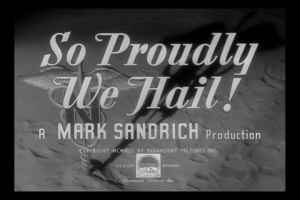


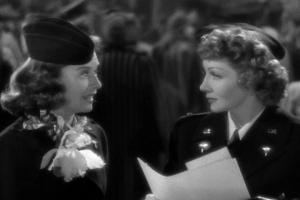


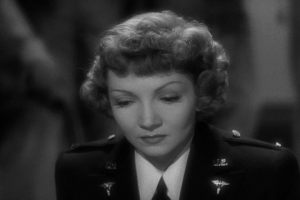
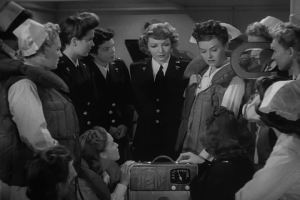
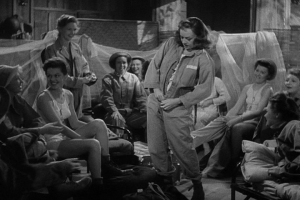

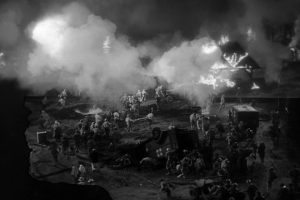

TECHNICAL SPECIFICATIONS:-
Video Codec: MPEG-2
Video Bitrate: 4999 kbps
Video Resolution: 720x480
Video Aspect Ratio: 1.333:1
Frames Per Second: 23.976
Audio Codec: AC3
Audio Bitrate: 192kb/s CBR 48000 Hz
Audio Streams: 2
Audio Languages:English
RunTime 126 mins
Subtitles: NONE
Ripped by: Trinidad [DDR]
Duration: 126 mins












